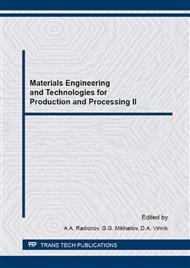p.3
p.8
p.13
p.20
p.26
p.31
p.34
p.40
Magnesium Dry Mixes for Outer Wall Decoration
Abstract:
A promising mode of magnesia binder use in construction is dry building mixtures production. Depending on purpose they can be self-leveling, plastering, painting, primer, putty, etc. To produce those different binders, including magnesia one, can be used, depending on the desired aesthetic, environmental and anti-bacterial properties. It can be used in children's, medical, public institutions, and residential premises. The most preferable use for magnesia dry building mixes (MDBM) is as plaster for inner or outer buildings decoration. Plasters for external use have to be light, creating a ‘breathing’ coating that prevents thermal cold bridges formation, has high vapor permeability that can adjust to the equilibrium moisture content of magnesia design on the whole, has good adhesion to the coated surface and adequate frost resistance. Ordinary Portland cement and lime-silica binders are most often used for such products. Unlike materials based on these binders, magnesia products are characterized by rapid strength development under natural conditions. Therefore, the use of magnesia binders which allow obtaining high-strength, environmentally friendly and bioresistant materials for construction is particularly interesting.
Info:
Periodical:
Pages:
3-7
Citation:
Online since:
September 2016
Authors:
Price:
Сopyright:
© 2016 Trans Tech Publications Ltd. All Rights Reserved
Share:
Citation:


